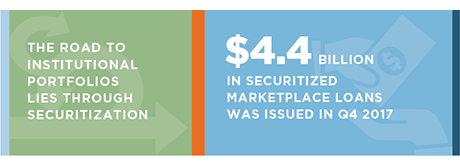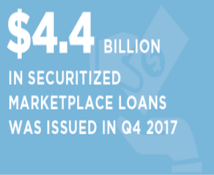
For centuries, corporate and consumer lending has followed a traditional model in which financial institutions act as centralized counterparties, making loans funded by deposits. Around 2006, this model was turned on its head by a new breed of fintech companies leveraging the network effect of the internet to directly connect lenders with borrowers. Originally termed peer-to-peer lending, the space is now referred to as marketplace lending, to reflect the maturing industry and the more diverse set of participants.
One might have thought that the ensuing financial crisis would nip this nascent industry in the bud. In fact, as banks cut back on lending in an effort to bolster their balance sheets, more consumers and small businesses began turning to marketplace lenders to help them pay off credit card debt, conduct home improvements or finance new business initiatives.
Today, over a decade later, the marketplace lending model is evolving into a new phase, as institutional investors are increasingly allocating capital to these products in search of higher yield and diversification. At the same time, these fintech lenders are looking to boost growth through securitization—packaging hundreds of smaller loans into fixed-income instruments that more naturally fit into institutional investors’ portfolios. In this Greenwich Report, we explore these trends and assess the overall levels of adoption among asset managers and pension plans.
From August to October 2017, Greenwich Associates interviewed 74 investors from U.S.-based pension plans and asset managers to understand how marketplace lending is perceived by fixed-income investors and the current state of adoption within the institutional investing community. Among our sample, 21 were current investors in marketplace loans and 53 were not. In some instances, their responses were broken out to highlight each segment’s opinions.

